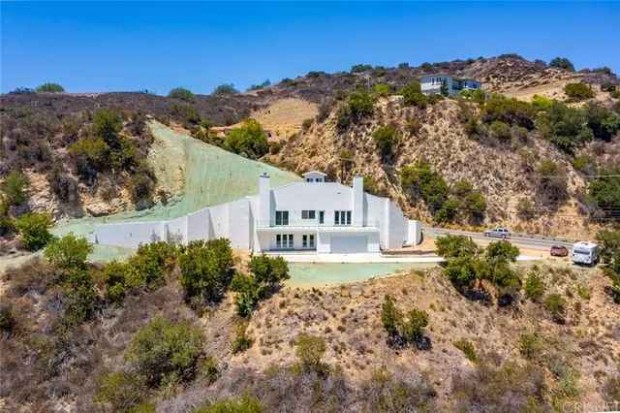A homeowner in Los Angeles builds a house resistant to fire using one of the oldest construction methods. Having been constructed for 13 years, it features insulation contributing to energy conservation.

(Photo : Lost Angeles Times/Shawn Cordon Real Estate )
Fire Resistant House
Designed by the Colorado-based business Formworks, the body of the house is constructed from a reinforced concrete shell that is more than four inches thick. Contractors created a large steel frame, stuffed it with foam, and pounded it with subsequent layers of concrete after excavating the slope. The foam was subsequently removed, the exterior was covered with a large amount of dirt, and the interior was constructed like any other house.
It is interesting to note that although the design may appear innovative when compared to the standards of today, earth-sheltering, which refers to the process of constructing protective shelters underground, is 'one of the oldest forms of building' known, dating back to 15,000 B.C.
As mentioned, after encountering a fire in his in-ground dome residence in Chatsworth, another region in Los Angeles that is at threat for fires, the stuntman Eddie Conna stated to Margolis on the podcast The Big Burn that he gave his approval for the residence in the canyon. Conna noted that some of him thought he would be fine since three sides of the house were buried and fire exposure was minimal. The homeowner reportedly liked the concept because the thick concrete shell of the house would provide insulation, reducing his utility bills.
It all began with the efficiency of the energy used. Afterward, when Conna continued his investigation, he realized he was constructing something impervious to fires. As it caused complications with permits and construction, Conna asserts that the residence's thirteen-year completion period is attributable, in part, to its distinctive design.
On the other hand, the house has windows surrounding enormous white walls supported by concrete and gravel at their foundations. Accordingly, eliminating potential hazards such as combustible soffit, dense vegetation adjacent to the structure that could ignite and cause window melt, and flammable fencing are absent. Thus, the siding is made of smooth white stucco rather than wood.
However, the potential source of concern could be the minor roof fragment protruding from the soil. Removing some of the larger plants from the front of the structure may also be a good idea by trimming them back somewhat. Nevertheless, if the house were to be kept clear of vegetation and mulch, it would appear in good condition.
Also Read: Why Civil Engineers Promote Adoption of Carbon Management in the Construction Sector
Severity of Wildfires in California
Based on a study, extreme temperatures and dry air contribute to more intense burning, which specifies climate change as the primary cause of the escalation of wildfires in California.
The analysis found that wildfires in California between the years 2002 and 2020 were responsible for the deaths of 302 individuals and the destruction of more than 60,000 properties. In 2018, the Camp Fire in Paradise, located northeast of Sacramento, was the most devastating of these fires, resulting in the deaths of 85 residents.
Furthermore, the correlation between unusual temperatures and a reduction in atmospheric relative humidity has led to a greater prevalence of vapor pressure deficit.' The difference between the amount of moisture that the air is capable of holding and the quantity that it contains at any one time is referred to as the deficit, and its existence is considered a significant indicator of wildfire potential in California and along the western United States.
Related Article: Key Factors to Consider When Building Eco-Friendly Houses







